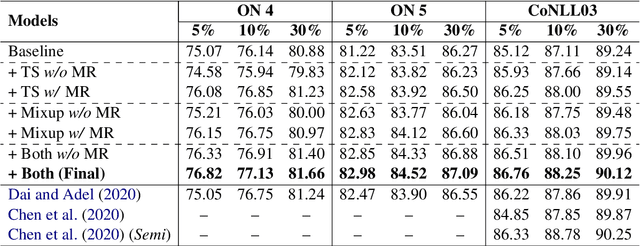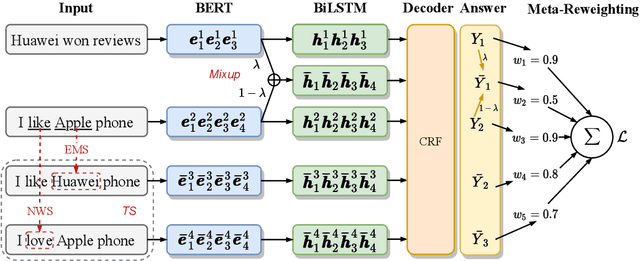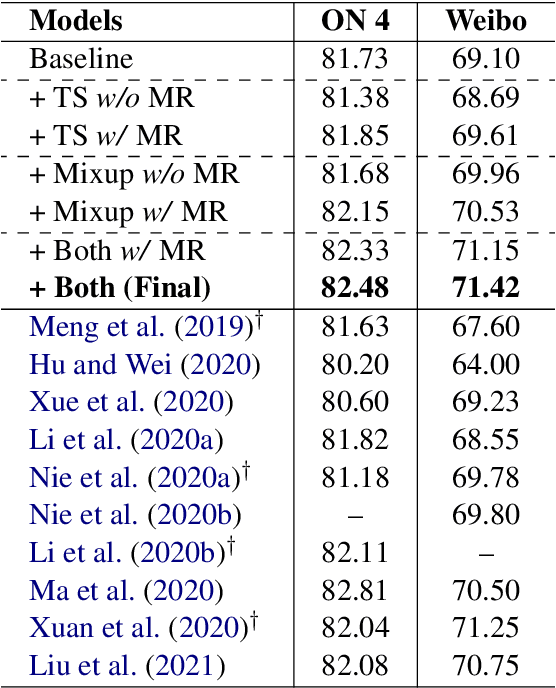Linzhi Wu
Landmark-Guided Cross-Speaker Lip Reading with Mutual Information Regularization
Mar 24, 2024



Abstract:Lip reading, the process of interpreting silent speech from visual lip movements, has gained rising attention for its wide range of realistic applications. Deep learning approaches greatly improve current lip reading systems. However, lip reading in cross-speaker scenarios where the speaker identity changes, poses a challenging problem due to inter-speaker variability. A well-trained lip reading system may perform poorly when handling a brand new speaker. To learn a speaker-robust lip reading model, a key insight is to reduce visual variations across speakers, avoiding the model overfitting to specific speakers. In this work, in view of both input visual clues and latent representations based on a hybrid CTC/attention architecture, we propose to exploit the lip landmark-guided fine-grained visual clues instead of frequently-used mouth-cropped images as input features, diminishing speaker-specific appearance characteristics. Furthermore, a max-min mutual information regularization approach is proposed to capture speaker-insensitive latent representations. Experimental evaluations on public lip reading datasets demonstrate the effectiveness of the proposed approach under the intra-speaker and inter-speaker conditions.
* To appear in LREC-COLING 2024
Adaptive End-to-End Metric Learning for Zero-Shot Cross-Domain Slot Filling
Oct 23, 2023Abstract:Recently slot filling has witnessed great development thanks to deep learning and the availability of large-scale annotated data. However, it poses a critical challenge to handle a novel domain whose samples are never seen during training. The recognition performance might be greatly degraded due to severe domain shifts. Most prior works deal with this problem in a two-pass pipeline manner based on metric learning. In practice, these dominant pipeline models may be limited in computational efficiency and generalization capacity because of non-parallel inference and context-free discrete label embeddings. To this end, we re-examine the typical metric-based methods, and propose a new adaptive end-to-end metric learning scheme for the challenging zero-shot slot filling. Considering simplicity, efficiency and generalizability, we present a cascade-style joint learning framework coupled with context-aware soft label representations and slot-level contrastive representation learning to mitigate the data and label shift problems effectively. Extensive experiments on public benchmarks demonstrate the superiority of the proposed approach over a series of competitive baselines.
Robust Self-Augmentation for Named Entity Recognition with Meta Reweighting
May 02, 2022



Abstract:Self-augmentation has received increasing research interest recently to improve named entity recognition (NER) performance in low-resource scenarios. Token substitution and mixup are two feasible heterogeneous self-augmentation techniques for NER that can achieve effective performance with certain specialized efforts. Noticeably, self-augmentation may introduce potentially noisy augmented data. Prior research has mainly resorted to heuristic rule-based constraints to reduce the noise for specific self-augmentation methods individually. In this paper, we revisit these two typical self-augmentation methods for NER, and propose a unified meta-reweighting strategy for them to achieve a natural integration. Our method is easily extensible, imposing little effort on a specific self-augmentation method. Experiments on different Chinese and English NER benchmarks show that our token substitution and mixup method, as well as their integration, can achieve effective performance improvement. Based on the meta-reweighting mechanism, we can enhance the advantages of the self-augmentation techniques without much extra effort.
 Add to Chrome
Add to Chrome Add to Firefox
Add to Firefox Add to Edge
Add to Edge